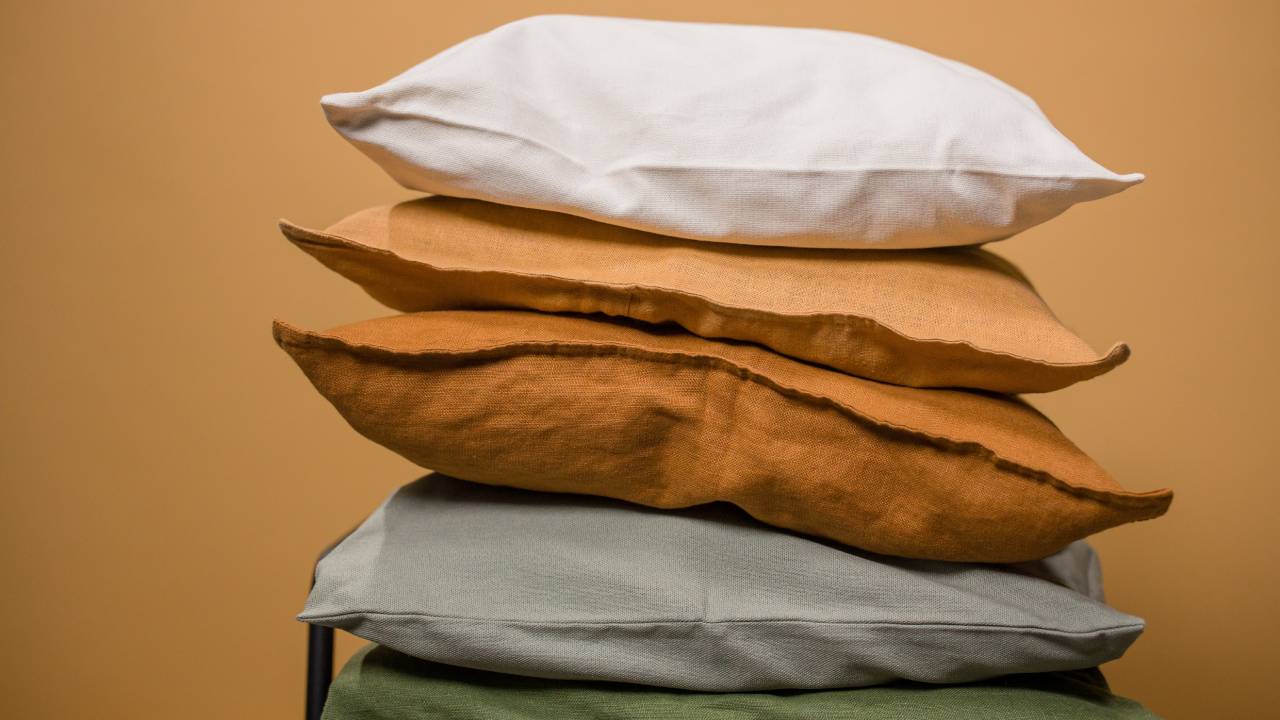5 pillow colours that disrupt your sleep, according to sleep expert
Having trouble sleeping? It could be the colour of your pillow…


We spend an estimated 33 years in bed – 26 years sleeping and 7 years trying to fall asleep. Considering this, it’s hardly surprising that we’re all looking to get the best night’s sleep possible, whether that’s upgrading to the best mattress or switching to the best pillows.
There are many reasons our sleep is disturbed throughout the night, from chilly rooms to outside noise, but it could be even simpler than that, like the colour of your pillows. This is linked to colour psychology, the study of colours and hues as an influence and explanation for human behaviour.
Multiple studies have found that colours influence our perception, wellbeing and emotions, so it’s not exactly far-fetched that the colour of our bedroom and bedding can affect the quality of our sleep. To understand this better, I spoke to sleep expert Karen Yu from Zinus UK, a furniture brand that makes mattresses, bed frames and sofas, using natural materials and ingredients.
“Everyday life can be incredibly hectic, so it’s always worth our time to find and invest in ways to help us relax. Our pillows are often the last thing we see at night and the first thing we see in the morning… that’s why it’s so important to get our pillow colour right,” says Karen. So, which pillow colours can disrupt your sleep?
Here are the 5 pillow colours you should avoid to get a better night’s rest. If your pillowcases are any of the following colours, head to our best bedding guide to find yourself a comfortable replacement.
1. Purple
The first pillow colour that can disrupt and harm your sleep is purple. While lilac and lavender are considered to help with sleep due to their blue undertones, purple is apparently anything but relaxing. According to Karen, purple is “actually quite a mentally stimulating colour. It’s closely associated with creativity which is more likely to wake you up rather than help you get a peaceful night’s sleep.”
2. Red
The colour red is associated with excitement, love and passion, so while it might seem like a great colour to add to your bedroom, it’s one that should be avoided, especially on your sheets and pillowcases. This is because “red is an incredibly active colour, and while it might be a desirable choice for some bedroom activities, sleep isn’t one of them,” Karen comments. Red pillows are more likely to make you feel restless and if you pick a bright red, it can be a shock to the senses, so best to avoid.
Get all the latest news, reviews, deals and buying guides on gorgeous tech, home and active products from the T3 experts

3. Pink
A colour that falls in between purple and red, bright pink has the same “sleep-negative characteristics” that the two colours share. Many children’s bedrooms are filled with bright pink, and more modern lifestyle and décor trends feature it, but it should be avoided when it comes to decorating your bed. “Tones like neon and fuchsia can feel overstimulating which can make it difficult to settle down at night.” However, if you’re a pink fan, choosing a light neutral toned pink or a pillowcase with pink undertones can be soothing and less aggressive than bright pink.
4. Brown
While brown might seem like the perfect option for the bedroom, it should actually be avoided on your pillows, according to Karen. This is because “brown tones in low or weak light can often feel drab and gloomy, which can make your bed uninviting and uninspiring in the morning.” When it comes to decorating your bedroom, you want to find the perfect balance of welcoming and relaxing, so you look forward to spending time in there but you can also switch off when you close the doors. Dark or solid browns disrupt this by making the room too dark and off-putting, but lighter browns can soothe and relax, particularly when paired with other décor.
5. Grey
Similar to brown, grey is another neutral colour to be avoided on your pillows. Grey is actually a controversial choice, as many designers and researchers are split on whether grey is good or bad for sleep. As a sleep expert, Karen says that while “dark and neutral greys can be a great décor choice for walls and soft furnishings, it should be avoided when it comes to pillows. Grey pillows can often feel flat and uninspiring rather than comforting.”

Pillow colours that can help you sleep
Now that you know the pillow colours you should be avoiding, you’re probably wondering which ones can actually help you sleep. Stick to the following pillow colours to bring warmth and comfort into your bedding.
Blue is the number one choice as it “tends to evoke a calming effect on the brain, and is the colour most associated with rest and relaxation.” All blues are a good choice, but lighter and more muted tones give your pillows a tranquil feel. Green is another popular choice, as it’s a “non-stimulating colour that evokes feelings of calm and peace”, most likely due to its presence in nature. Just like blue, the softer colours of green are the best for relaxation.
If you’d prefer something brighter, yellow and orange are also recommended by Karen. Yellow is a happy colour that can help those who find it hard to wake up in the morning feel more positive about the day ahead. Orange is another colour said to have “warm and calming effects that can help you achieve a snug and welcoming feeling for your pillow”, mainly due to its connection to Autumn. Both of these colours should be light and soft to avoid overstimulation.
Finally, white is the final choice, and like grey, it’s a controversial one. While some believe it looks too sterile, “white can feel cool and refreshing”. To avoid too much white in a room, Karen suggests when doubling up your pillows to “consider using an alternative colour, and make sure to vary the rest of your bedding with muted pastels to make it an inviting space.”

Beth is Home Editor for T3, looking after style, living and wellness. From the comfiest mattresses to strange things you can cook in an air fryer, Beth covers sleep, smart home, coffee machines, watches, grooming tools, fragrances, gardening and more.
In her spare time, Beth enjoys running, reading, baking and attempting craft projects that will probably end in disaster!